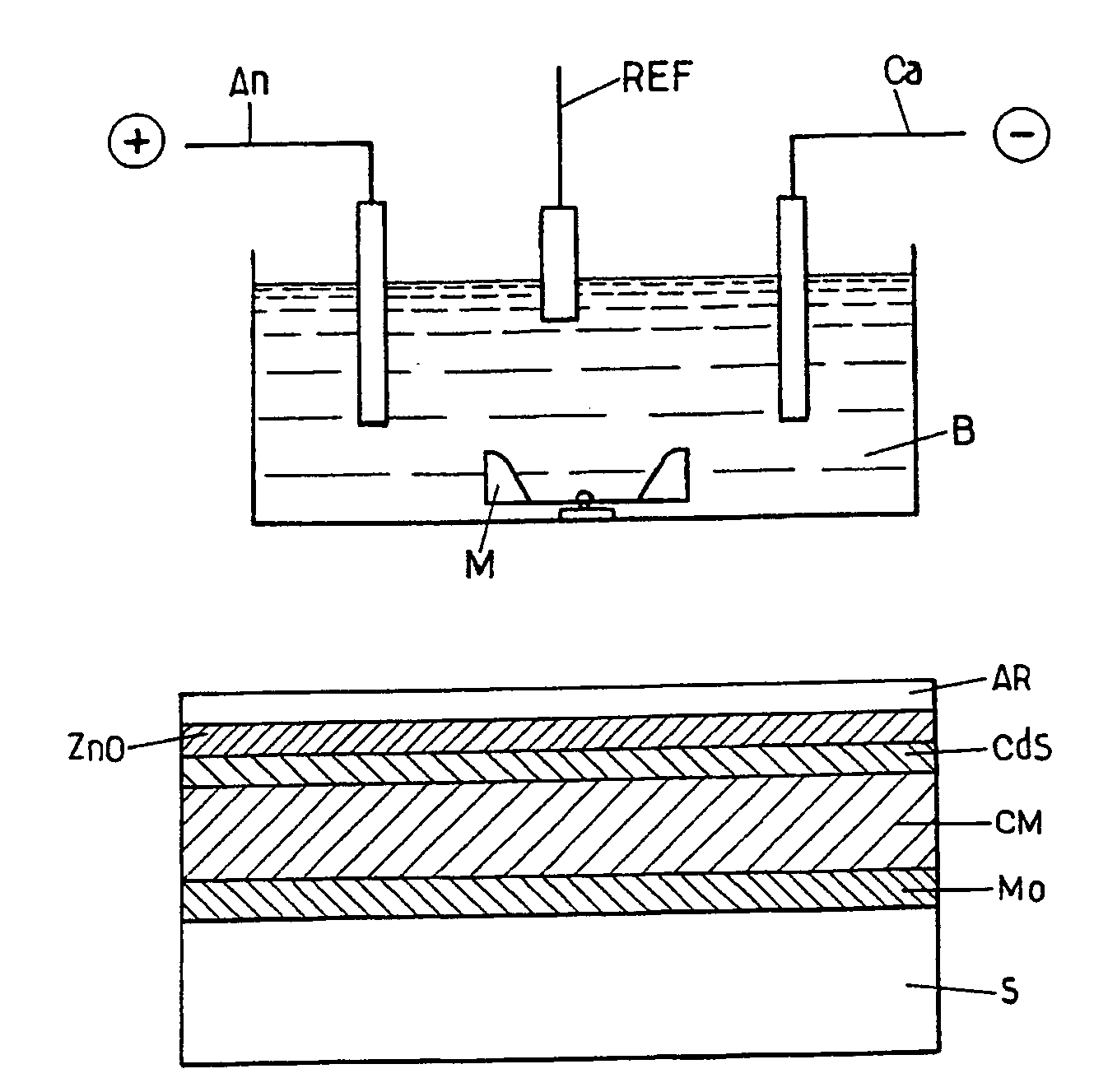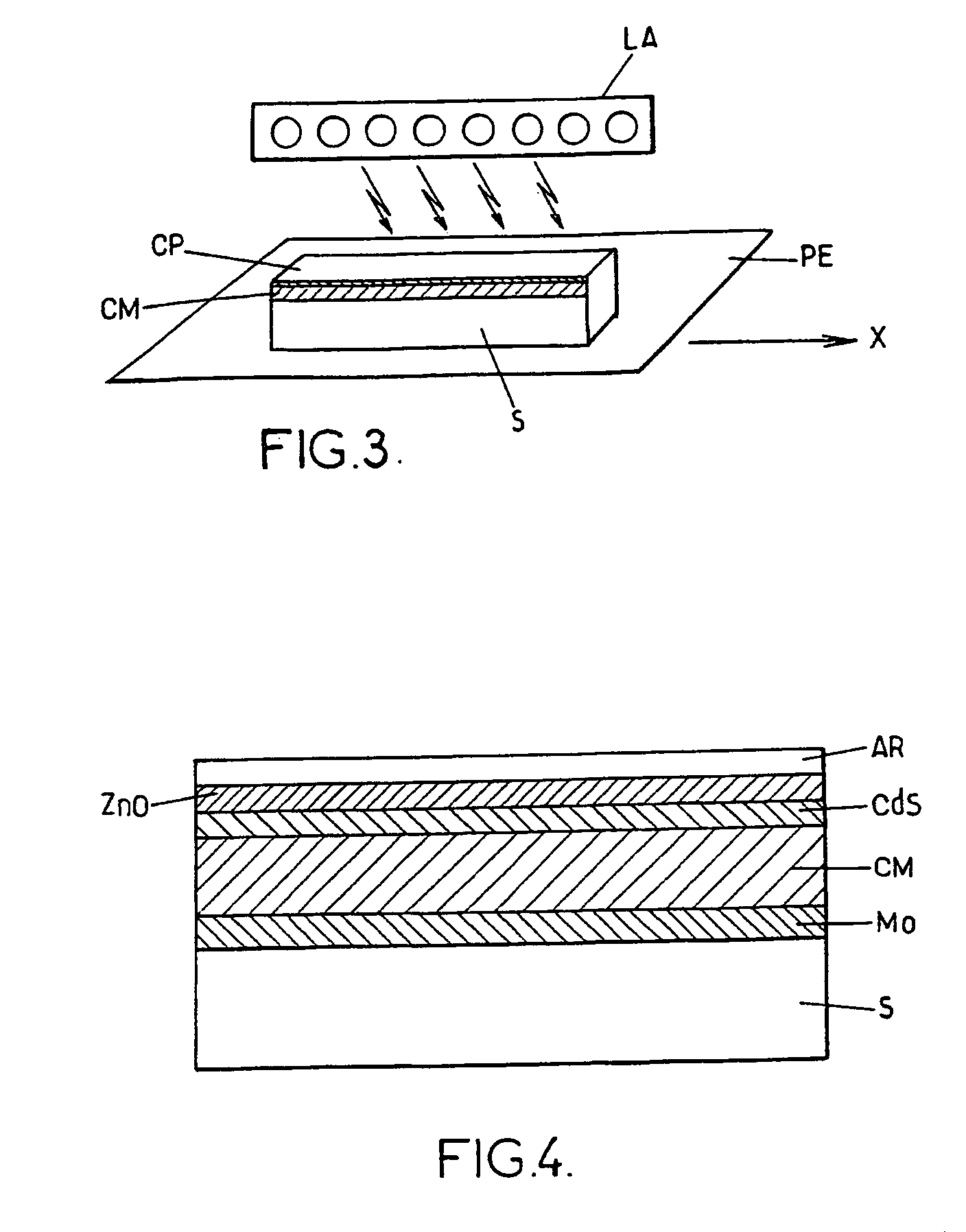Method for making thin-film semiconductors based on I-III-VI2 compounds, for photovoltaic applications
a technology of i-iii-vi2 and compound, applied in the field of semiconductor thin film deposition, can solve the problems of difficult crystallization of cigs, low use efficiency, and high cost of evaporation, and achieve satisfactory crystallization of the layer, and limit the exodiffusion of vi elements.
- Summary
- Abstract
- Description
- Claims
- Application Information
AI Technical Summary
Benefits of technology
Problems solved by technology
Method used
Image
Examples
Embodiment Construction
[0052]Referring to FIG. 1, thin films of copper and indium diselenide are obtained at room pressure and temperature by electrodeposition of a precursor film CM on a glass substrate S previously covered with molybdenum Mo (FIG. 4). Advantageously, the substrate S is initially covered with an additional electronic conductive layer, for example metallic or in an oxide form (not shown). This conductive layer may furthermore rest on one or more sublayers used for a specific application (diffusion barrier, mirror or the like) in the fabrication of photovoltaic cells.
[0053]Referring to FIG. 1, the electrodeposition is carried out in a bath B containing an indium salt, a copper salt and dissolved selenium oxide. In order to obtain a CIGS thin film whose general composition corresponds substantially to CuGaxIn1−xSe2 (with x between 0 and 1), it will be understood that the bath may furthermore contain a gallium salt. In an even more sophisticated variant, sulfur salts (for example sulfite or ...
PUM
| Property | Measurement | Unit |
|---|---|---|
| temperature | aaaaa | aaaaa |
| band gap | aaaaa | aaaaa |
| band gap | aaaaa | aaaaa |
Abstract
Description
Claims
Application Information
 Login to View More
Login to View More - R&D
- Intellectual Property
- Life Sciences
- Materials
- Tech Scout
- Unparalleled Data Quality
- Higher Quality Content
- 60% Fewer Hallucinations
Browse by: Latest US Patents, China's latest patents, Technical Efficacy Thesaurus, Application Domain, Technology Topic, Popular Technical Reports.
© 2025 PatSnap. All rights reserved.Legal|Privacy policy|Modern Slavery Act Transparency Statement|Sitemap|About US| Contact US: help@patsnap.com



